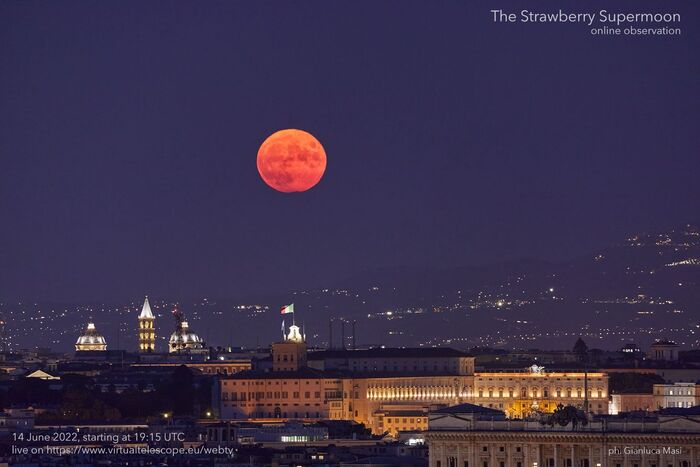Today's night, Tuesday 14 June, will be illuminated by the 'Strawberry Supermoon': our satellite, in conjunction with the full Moon, will reach the point of its orbit closest to the Earth (perigee) and will therefore appear larger and brighter than the usual.
It is the second Superluna that 2022 gives us, and there will be two more.
Its evocative name was coined by Native Americans and passed down to this day in honor of the strawberry harvest season.
In Europe, however, this Moon is also known as the 'Rose Moon', as this is the period in which the queen of flowers blooms.
It will be possible to follow the event in live streaming thanks to the Virtual Telescope Project, which will broadcast it on its website starting at 10.45 pm.
“The next Superluna will appear about 7% larger and a little brighter than average, but only an experienced observer could realize it,” says Gianluca Masi, astrophysicist and chief scientist for the Virtual Telescope Project.
“In fact - continues Masi - these are not exactly striking variations, which nevertheless add charm to the event, a precious opportunity to admire our natural satellite in the context of the night sky, an increasingly neglected and forgotten landscape”.
Both the full and the new moon are considered 'Superluna' (a term that has no scientific value), as long as it occurs with our satellite at the minimum distance from the Earth.
Of course, however, the new Moon is not visible in the sky, therefore the only observable Supermoon is the full one, unless an eclipse of the Sun occurs at the new Supermoon (it happened in March 2016).
In 2022, in addition to the four full Supermoons, three new ones will also fall, which, however, cannot be admired.







